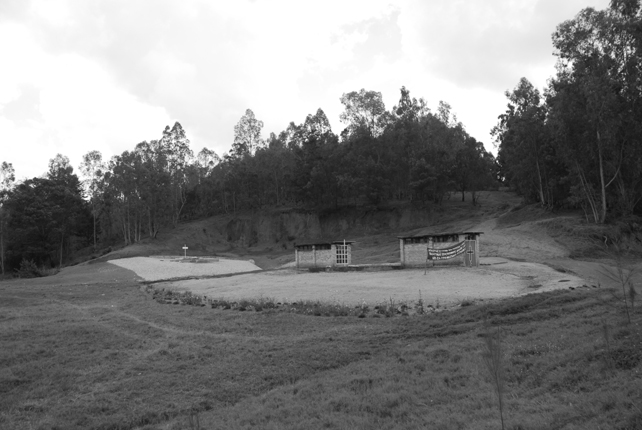
|
The Shyogwe site is located in Southern Province. Click on the image for a slideshow of photographs. All photographs © 2002-2008 Jens Meierhenrich. |

|
The Shyogwe site is located in Southern Province. Click on the image for a slideshow of photographs. All photographs © 2002-2008 Jens Meierhenrich. |
While driving from Butare to Kigali, one passes, on the left hand side of the well-paved road, a sizable memorial ground. This is the genocide memorial of Shyogwe in what once was Gitarama prefecture. Perched on the edge of the forest, the rather unusual memorial is easy to miss, despite its size. Unlike most genocide memorials, it is not enclosed and the landscaping rather sprawling. It lacks the typical trappings of formal structures of remembrance, many of which are out of bounds to visitors due to gates, fences, and walls.
But a closer look reveals two identical, rectangular buildings that are reminiscent of other memorials. Connected by a set of stairs, these structures house underground crypts. Off to a side, on a gentle incline, sits a mass grave made of smooth concrete and adorned with a white cross. A sea of light-colored pebbles creates an atmosphere of solemnity and tranquility.
Among the alleged masterminds of the genocide in Shyogwe, Rwanda, is Samuel Musabyimana, the former Anglican Bishop of the Shyogwe Diocese. Kenya police arrested Musabyimana in Nairobi in the spring of 2000. From there he was transferred to the International Criminal Tribunal for Rwanda (ICTR) in Arusha, Tanzania. The Indictment issued by the ICTR’s Office of the Prosecutor charged the Bishop with genocide, complicity in genocide, conspiracy to commit genocide, and extermination as a crime against humanity. Musabyimana was to stand trial for, among other acts, assisting in the separation of Tutsi and Hutu on diocese grounds; instructing students and employees to mount roadblocks adjoining the Shyogwe diocese; condoning the transfer of Tutsi to killing sites in Kabgayi, a major religious complex nearby; and remunerating militia for the killing of displaced Tutsi.
What hand exactly the Bishop of the Diocese had in the death of those Tutsi victims commemorated by the side of road in Shyogwe, we may never know. Musabyimana died at the Kilimanjaro Medical Centre in Moshi, Tanzania, on January 24, 2003 while awaiting trial.
Copyright © 2010 Jens Meierhenrich. All rights reserved.